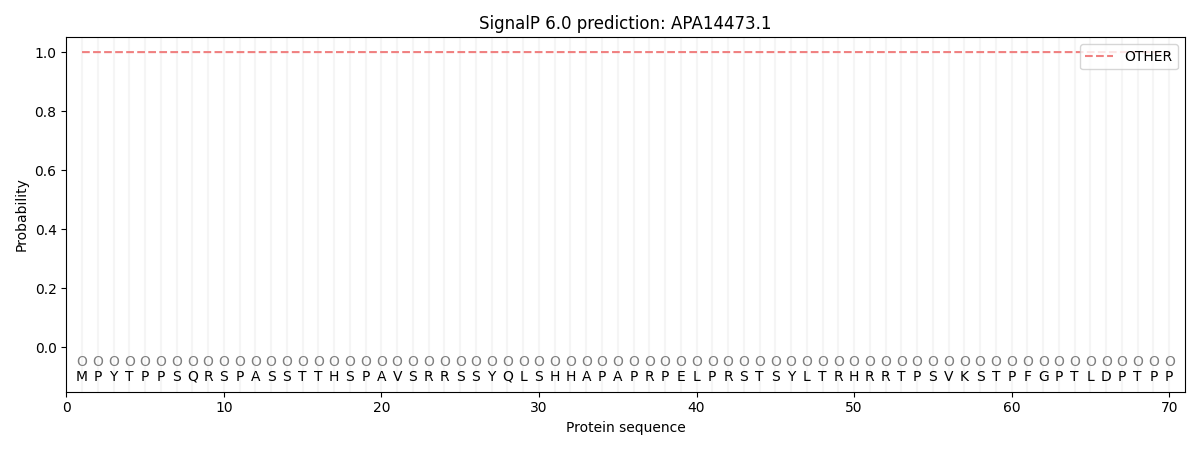You are browsing environment: FUNGIDB
CAZyme Information: APA14473.1
You are here: Home > Sequence: APA14473.1
Basic Information |
Genomic context |
Full Sequence |
Enzyme annotations |
CAZy signature domains |
CDD domains |
CAZyme hits |
PDB hits |
Swiss-Prot hits |
SignalP and Lipop annotations |
TMHMM annotations
Basic Information help
| Species | Sclerotinia sclerotiorum | |||||||||||
|---|---|---|---|---|---|---|---|---|---|---|---|---|
| Lineage | Ascomycota; Leotiomycetes; ; Sclerotiniaceae; Sclerotinia; Sclerotinia sclerotiorum | |||||||||||
| CAZyme ID | APA14473.1 | |||||||||||
| CAZy Family | GT2 | |||||||||||
| CAZyme Description | unspecified product | |||||||||||
| CAZyme Property |
|
|||||||||||
| Genome Property |
|
|||||||||||
| Gene Location | ||||||||||||
CAZyme Signature Domains help
| Family | Start | End | Evalue | family coverage |
|---|---|---|---|---|
| CBM21 | 354 | 460 | 1.7e-31 | 0.9626168224299065 |
CDD Domains download full data without filtering help
| Cdd ID | Domain | E-Value | qStart | qEnd | sStart | sEnd | Domain Description |
|---|---|---|---|---|---|---|---|
| 397445 | CBM_21 | 1.36e-48 | 349 | 461 | 1 | 113 | Carbohydrate/starch-binding module (family 21). This family consists of several eukaryotic proteins that are thought to be involved in the regulation of glycogen metabolism. For instance, the mouse PTG protein has been shown to interact with glycogen synthase, phosphorylase kinase, phosphorylase a: these three enzymes have key roles in the regulation of glycogen metabolism. PTG also binds the catalytic subunit of protein phosphatase 1 (PP1C) and localizes it to glycogen. Subsets of similar interactions have been observed with several other members of this family, such as the yeast PIG1, PIG2, GAC1 and GIP2 proteins. While the precise function of these proteins is not known, they may serve a scaffold function, bringing together the key enzymes in glycogen metabolism. This family is a carbohydrate binding domain. |
| 407028 | CBM53 | 3.22e-09 | 377 | 460 | 1 | 75 | Starch/carbohydrate-binding module (family 53). |
| 411474 | fibronec_FbpA | 1.29e-04 | 2 | 172 | 184 | 352 | LPXTG-anchored fibronectin-binding protein FbpA. FbpA, a fibronectin-binding protein described in Streptococcus pyogenes, has a YSIRK-type (crosswall-targeting) signal peptide and a C-terminal LPXTG motif for covalent attachment to the cell wall. It is unrelated to the PavA-like protein from Streptococcus gordonii (see BlastRule NBR009716) that was given the identical name, so the phase LPXTG-anchored is added to the protein name for clarity. |
CAZyme Hits help
| Hit ID | E-Value | Query Start | Query End | Hit Start | Hit End |
|---|---|---|---|---|---|
| 0.0 | 1 | 751 | 1 | 751 | |
| 0.0 | 1 | 747 | 1 | 749 | |
| 0.0 | 1 | 747 | 1 | 750 | |
| 0.0 | 1 | 673 | 1 | 673 | |
| 1.11e-200 | 1 | 749 | 1 | 710 |
PDB Hits download full data without filtering help
| Hit ID | E-Value | Query Start | Query End | Hit Start | Hit End | Description |
|---|---|---|---|---|---|---|
| 3.32e-12 | 371 | 465 | 48 | 138 | Solution structure of the carbohydrate binding module of the muscle glycogen-targeting subunit of Protein Phosphatase-1 [Oryctolagus cuniculus] |
|
| 4.99e-10 | 366 | 460 | 45 | 135 | Chain A, Protein phosphatase 1, regulatory (Inhibitor) subunit 3B [Homo sapiens] |
Swiss-Prot Hits download full data without filtering help
| Hit ID | E-Value | Query Start | Query End | Hit Start | Hit End | Description |
|---|---|---|---|---|---|---|
| 2.84e-10 | 371 | 467 | 145 | 237 | Protein phosphatase 1 regulatory subunit 3A OS=Mus musculus OX=10090 GN=Ppp1r3a PE=1 SV=2 |
|
| 5.34e-10 | 339 | 460 | 134 | 256 | Protein phosphatase 1 regulatory subunit 3C OS=Mus musculus OX=10090 GN=Ppp1r3c PE=1 SV=1 |
|
| 5.34e-10 | 339 | 460 | 134 | 256 | Protein phosphatase 1 regulatory subunit 3C OS=Rattus norvegicus OX=10116 GN=Ppp1r3c PE=2 SV=1 |
|
| 1.12e-09 | 371 | 465 | 146 | 236 | Protein phosphatase 1 regulatory subunit 3A OS=Oryctolagus cuniculus OX=9986 GN=PPP1R3A PE=1 SV=1 |
|
| 4.06e-09 | 335 | 460 | 105 | 231 | Protein phosphatase 1 regulatory subunit 3B OS=Rattus norvegicus OX=10116 GN=Ppp1r3b PE=1 SV=1 |
SignalP and Lipop Annotations help
This protein is predicted as OTHER

| Other | SP_Sec_SPI | CS Position |
|---|---|---|
| 1.000041 | 0.000000 |
